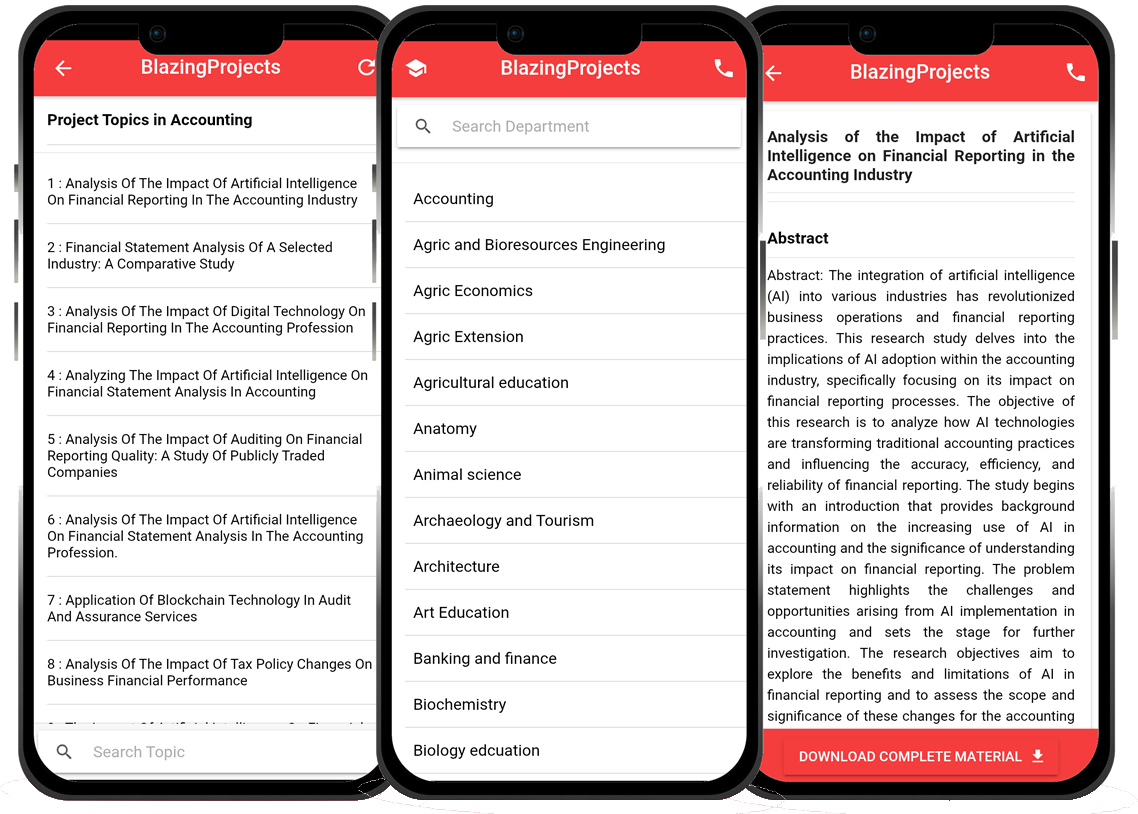Design and implementation of ‘software as a service’ (saas) based e-learning platform
Table Of Contents
Project Abstract
In this project, an e-learning platform for students in various fields was designed from reviewing relevant literatures with the aims of positively revolutionizing the educational process by making education much more practical, and relevance-based as w ell as effectively bridging the gap between students, schools, and their tutors/instructors. Looking at information and technological trends in the world, information and management technology needs to be delivered on the go. Therefore, the system was designed considering efficiency, satisfaction, delay, errors etc. The waterfall software development approach was adopted (because of its iterative nature) and Data were collected based on some unstructured interviews on campus and some general observations of existing e-learning web platform as well as general online computing. Also, systematic and theoretical analyses in the methods applied in the work typically encompassed concepts such as paradigms, theoretical models, faces and qualitative techniques. Technologies used in implementation were JavaScript, PHP (for the back-end design), HTML & CSS (for front-end design) and MySQL (for database management).
Project Overview
1.1 BACKGROUND OF STUDY
However and whatever our dispositions are to education, it becomes imperative to note that the more efficient and faster the nature of education and learning, the better and more productive the results will be. E-learning is an extremely significant (but incomplete) subset of educational technology. The origins of the term is not certain, although it is suggested that the term most likely originated during the 1980’s, within the similar time frame of another delivery mode online learning. Nichols (2003) defines e-Learning as strictly learning that’s possible by using technological tools that are either web-based, web-distributed, or web-capable. Ellis (2004) added to this definition that e-learning also makes use of audio and videotape, satellite broadcast and interactive TV and it is not strictly achieved through web-based means as defined by Nichols (2003).
The e- part of the term e-earning does not necessarily mean electronic as per e-mail or ecommerce. Rather, according to Bernard Luskin, an educational technology pioneer, he advocated that the “e-” of e-learning should be interpreted to mean “exciting, energetic, enthusiastic, emotional, extended, excellent, and educational” in addition to “electronic”.
This approach to learning called e-learning has been adopted by organizations in different parts of the world for instance “Google Classroom, Coursera, Khan Academy” etc. Through these establishments it has been seen that e-learning would provide great benefits especially in a continent like Africa. In the light of these benefits, it is not surprising that institutions and international agencies have been spending many thousands of dollars to pilot and implement various e-Learning solutions in the region (Farrell & Isaacs, 2007). For example, the African Development Bank Group (AfDB) provided a grant of $15.6 million to African Virtual University (AVU) to build e-learning centers and train content developers at 31 partner institutions in Africa (Adkins, 2013). Seven of these institutions are in East Africa. Similarly, the Partnership of Higher Education Africa (PHEA) has given funding to seven institutions in Africa (three of them in East Africa) to implement various e-Learning solutions (Hoosen & Butcher, 2012).
Blazingprojects Mobile App
📚 Over 50,000 Project Materials
📱 100% Offline: No internet needed
📝 Over 98 Departments
🔍 Software coding and Machine construction
🎓 Postgraduate/Undergraduate Research works
📥 Instant Whatsapp/Email Delivery

Related Research
Predicting Disease Outbreaks Using Machine Learning and Data Analysis...
The project topic, "Predicting Disease Outbreaks Using Machine Learning and Data Analysis," focuses on utilizing advanced computational techniques to ...
Implementation of a Real-Time Facial Recognition System using Deep Learning Techniqu...
The project on "Implementation of a Real-Time Facial Recognition System using Deep Learning Techniques" aims to develop a sophisticated system that ca...
Applying Machine Learning for Network Intrusion Detection...
The project topic "Applying Machine Learning for Network Intrusion Detection" focuses on utilizing machine learning algorithms to enhance the detectio...
Analyzing and Improving Machine Learning Model Performance Using Explainable AI Tech...
The project topic "Analyzing and Improving Machine Learning Model Performance Using Explainable AI Techniques" focuses on enhancing the effectiveness ...
Applying Machine Learning Algorithms for Predicting Stock Market Trends...
The project topic "Applying Machine Learning Algorithms for Predicting Stock Market Trends" revolves around the application of cutting-edge machine le...
Application of Machine Learning for Predictive Maintenance in Industrial IoT Systems...
The project topic, "Application of Machine Learning for Predictive Maintenance in Industrial IoT Systems," focuses on the integration of machine learn...
Anomaly Detection in Internet of Things (IoT) Networks using Machine Learning Algori...
Anomaly detection in Internet of Things (IoT) networks using machine learning algorithms is a critical research area that aims to enhance the security and effic...
Anomaly Detection in Network Traffic Using Machine Learning Algorithms...
Anomaly detection in network traffic using machine learning algorithms is a crucial aspect of cybersecurity that aims to identify unusual patterns or behaviors ...
Predictive maintenance using machine learning algorithms...
Predictive maintenance is a proactive maintenance strategy that aims to predict equipment failures before they occur, thereby reducing downtime and maintenance ...